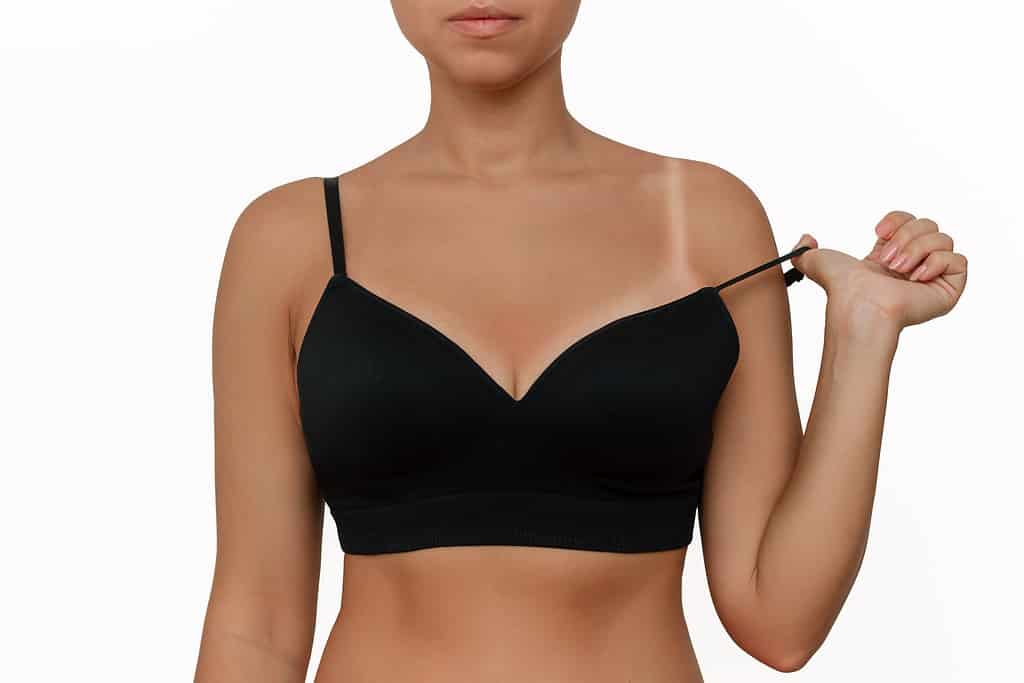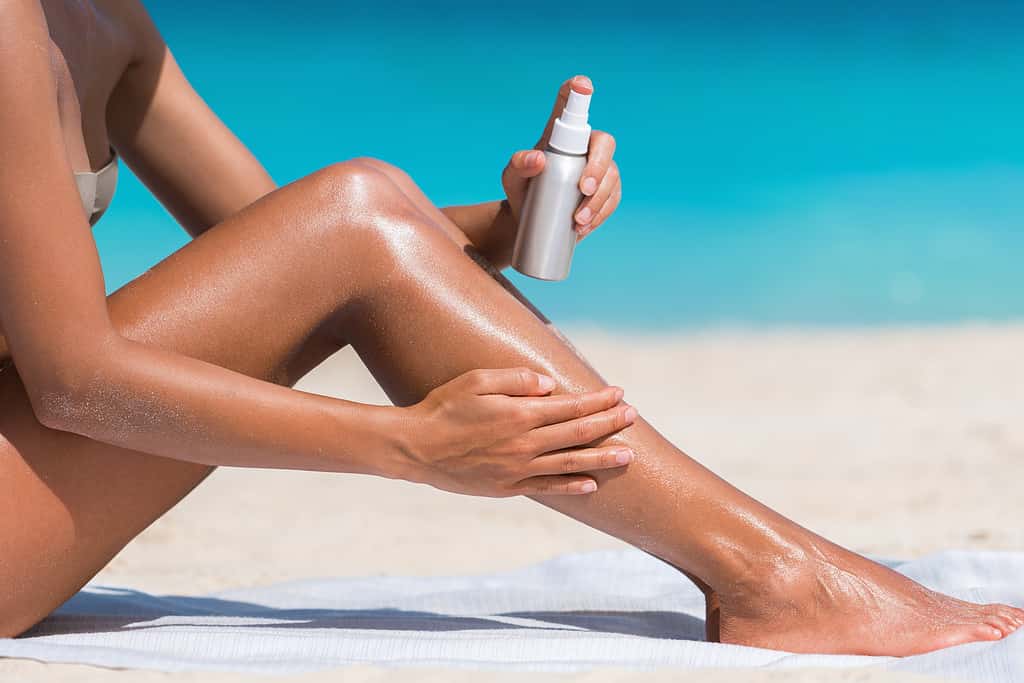Introduction
The UV Index measures the intensity of ultraviolet light’s radiation and its interaction with human skin. The UV Index records its highest values during the summer season when temperatures are warm, and the sunlight is at its peak. During this time, one can find many people outside enjoying the weather. Summer is also the prime tanning season when people sunbathe hoping to get that bronze skin color that everyone loves. However, people should be aware of tanning when the UV Index is high. Discover the best UV Index to work on your tan and find out how to protect yourself from UV radiation.
What is Ultraviolet Light?

©iStock.com/Marina Demeshko
Ultraviolet, or UV, light describes a type of electromagnetic radiation that comes from the sun. Transmission of electromagnetic radiation depends on particles and waves that are categorized by certain frequencies and wavelengths. Electromagnetic radiation lies on a spectrum divided into seven categories. One of the categories on the electromagnetic spectrum is UV light.
How is UV light measured?
UV light can be measured in several ways. First UV light can be divided into three subcategories: UVA, UVB, and UVC light. Each subcategory of UV light is measured by a unit of length called a nanometer. One nanometer is equivalent to one billionth of a meter. UVA light contains wavelengths measuring between 315 and 400 nanometers. UVB wavelengths range from 280 to 315 nanometers. Wavelengths considered to fall into the UVC light category measure between 180 and 280 nanometers. The greater the wavelength measures in nanometers, the longer it is.
Numerous factors go into calculating the UV Index. These factors are ground-level strength of UV radiation, forecasted cloud amounts, forecasted stratospheric ozone concentration, and elevation. The National Oceanic and Atmospheric Administration uses two satellites to measure the amount of ozone across the world. Stratospheric ozone levels are forecasted using this data. Stratospheric ozone is created when UV light from the sun meets molecular oxygen.
Once stratospheric ozone is forecasted, a computer determines how strong UV radiation is at ground level by considering stratospheric ozone levels and the angle at which sunlight meets the ground. The strength of UV radiation at ground level also fluctuates according to the type of UV radiation emitted. Therefore, the computer must consider the various wavelengths characterized by UV radiation in creating an accurate calculation.
Examples of Measurements
For instance, the strength of UV radiation at ground level will be different for UVA light than for UVB light. UVA light results in stronger UV radiation because its wavelengths measure between 315 and 400 nanometers. UVB light results in weaker UV radiation because its wavelengths measure between 280 and 315 nanometers. When stratospheric ozone absorbs UV radiation, it decreases the intensity of the radiation. Stratospheric ozone better absorbs shorter wavelengths than longer wavelengths. Thus, the greater the wavelength in nanometers, the stronger the UV radiation will be at ground level.
After calculating the intensity and strength of UV radiation at ground level, scientists must determine how UV radiation affects human skin. Although shorter wavelengths are better absorbed by stratospheric ozone, shorter wavelengths whose intensity is equal to longer wavelengths cause more skin damage. Scientists use a “weighting factor” to help determine how UV radiation will affect human skin. The strength of UV radiation at ground level at a certain wavelength is multiplied by this weighting factor, which produces a result.
The result of this equation requires a few more steps in determining how UV radiation will affect humans. Scientists must account for cloud presence in the atmosphere. Clouds absorb UV radiation, which decreases their UV intensity at ground level. For instance, clear skies with no clouds allow for 100% of UV radiation to reach ground level. On the other hand, a partly cloudy day only allows for 73% to 89% of UV radiation to reach ground level.
Additional Calculations
The next step in calculating UV Index is considering elevation. For every kilometer above sea level, the strength of UV radiation increases by 6%. As UV radiation passes through the atmosphere, stratospheric ozone absorbs it. For every increase in elevation, stratospheric ozone loses its chance to absorb UV light before it reaches ground level. This is why many people still experience sunburns at high elevations. Heat is not necessarily equivalent to the strength of UV radiation. While a climber might be at the summit of a cold, snow-topped mountain, they are more likely to be sunburned than someone at sea level.
In sum, all figures, numbers, and percentages mentioned above are put into an equation that calculates the UV Index. The UV Index ranges from 1 to 11. A UV Index of 1 means that UV radiation at ground level is low and will have little effect on human skin. Conversely, a UV Index of 11 signifies extreme UV radiation at ground level and will have a great effect on human skin.
What is the Best UV Index to Work on Your Tan?

©iStock.com/Maridav
The best UV Index for tanning measures at 7 or lower. A UV Index greater than 7 presents the possibility of sunburn. A sunburn occurs when UV radiation is strong and reacts with human skin in a way that causes a burn. Some sunburn symptoms are swollen pink or red skin, itchiness, swelling, pain, blisters, and skin peeling.
Ultimately, though, how you tan and what damage your skin receives depends on your skin phenotype. How your skin reacts to the sun’s presence is determined by the Fitzpatrick Scale. The Fitzpatrick Scale is divided into six skin types, which are determined by the amount of melanin present in the skin. Melanin is a substance, usually determined by genetics, that creates skin, eye, and hair color. The greater amount of melanin in your body, the darker skin you will have.
On the Fitzpatrick Scale, type I describes the fairest skin tone while type VI describes the darkest skin tone. For instance, a person that has little melanin and type I skin will not tan; they are highly likely to get a sunburn. On the other hand, a person with great amounts of melanin and type VI skin will not burn when exposed to UV radiation.
When is the UV Index Too High to Tan?
It is not a good idea for people to tan when the UV Index is above 7. Tanning when the UV Index is high increases the likelihood of sunburn, especially for those with skin types I-III. While sunburn might not seem so bad, UV radiation can cause lasting effects, too. Some of these effects include premature aging, eye disease, or skin cancer.
However, there are several ways to protect your skin and eyes when outside or tanning. Sunglasses are important to wear outside when the bright sun is at its peak. Furthermore, people should not look directly at the sun, as this can cause damage to the eyes. Sunscreen helps protect the skin from burns, aging, and skin cancer. Many experts recommend that people wear sunscreen every day, especially during summer, no matter whether a person is tanning or going outside for long periods of time.
Why You Should Wear Sunscreen When Tanning
There are two main types of sunscreen, which are physical blockers and chemical blockers. Physical blockers are comprised of fine particles deriving from minerals, such as zinc oxide. Physical blockers reflect UV radiation away from the skin. Chemical blockers usually contain carbon and create a layer on the skin that absorbs UV radiation. The absorption of UV radiation by chemical blockers keeps UV rays from penetrating the skin.
Most sunscreens available for purchase contain both chemical and physical blockers of UV radiation. Both blockers work to protect the skin from the effects of harmful UV radiation. However, some side effects of using sunscreen may occur. Physical blockers are unlikely to cause irritation or an allergic reaction, but they are usually greasier. Greasy sunscreen can clog pores and increase the likelihood of receiving acne. On the other hand, chemical blockers are easy to apply and less greasy, but they may cause irritation or allergic reaction. Therefore, sunscreen wearers should test out several types of sunscreens to discover what works best for their skin.
Furthermore, wearing sunscreen does not mean that all UV radiation will be blocked from penetrating the skin. For some, this means that they are still at risk of being sunburned even while wearing sunscreen. For others, this means that they can still get tan while wearing sunscreen. Lastly, for people with pale skin, the best way to avoid sunburn is to use sun protection and minimize time spent in direct sunlight.
The post This is the Best UV Index To Work on Your Tan appeared first on AZ Animals.
from Animal News, Facts, Rankings, and More! - AZ Animals https://ift.tt/6eXvENh